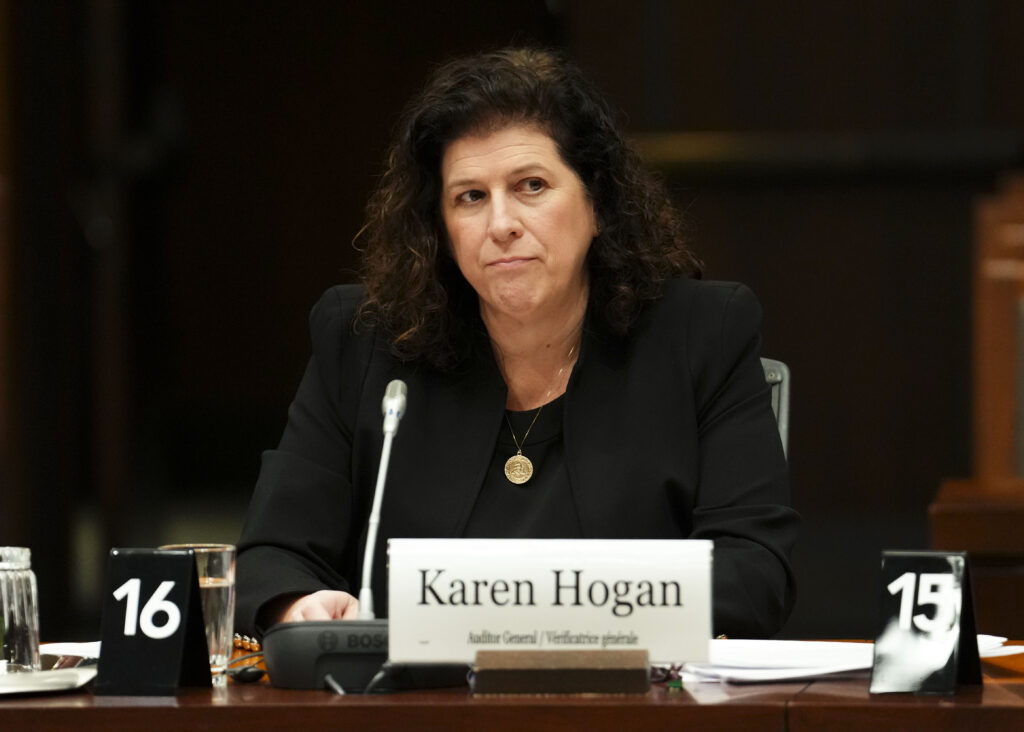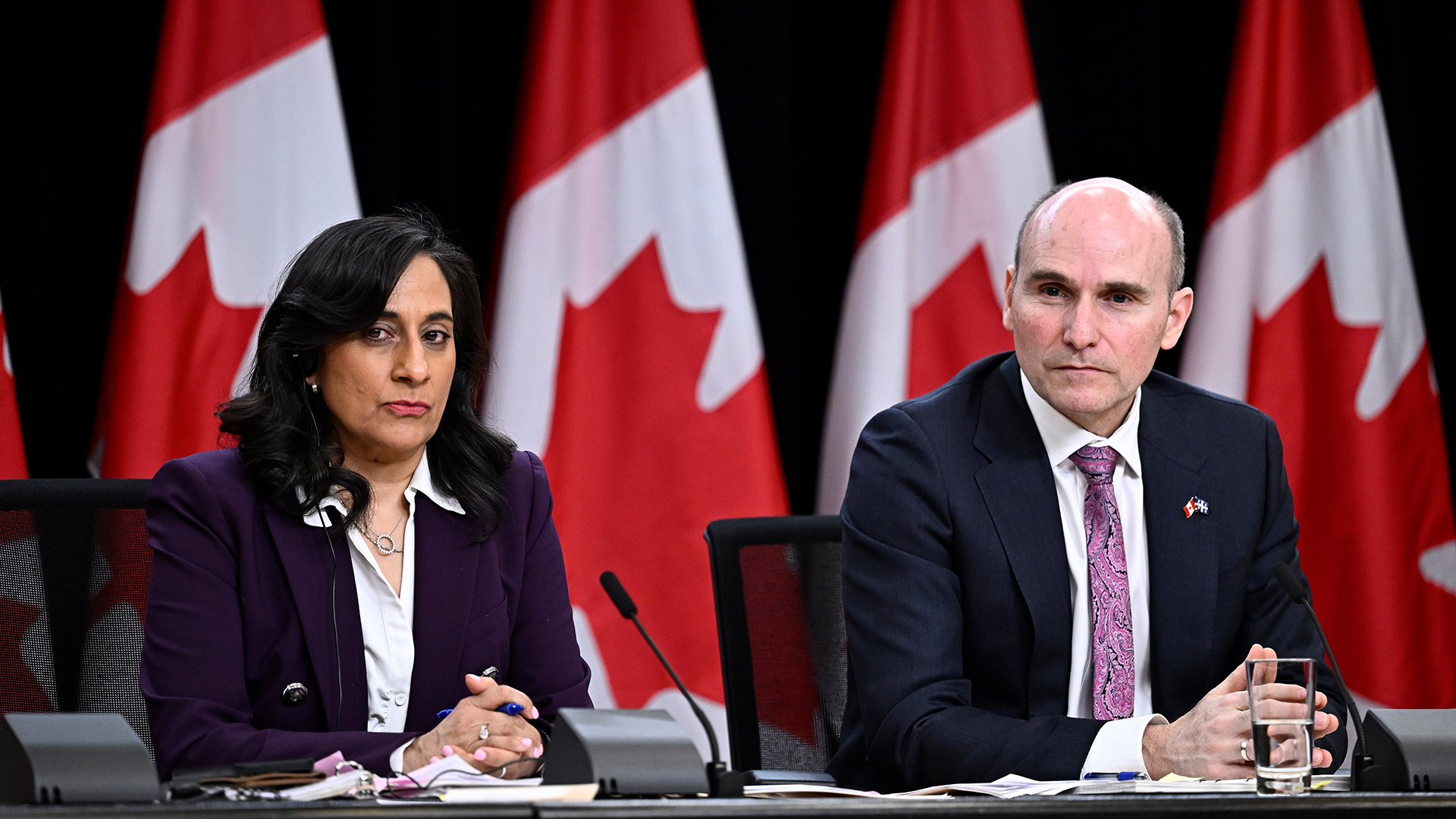
OTTAWA – Not since the Gomery inquiry into the sponsorship scandal more than 20 years ago has the focus on how public servants manage been so intense. That was the federal government’s last big scramble to reform and bring better management, accountability and integrity to the procurement system.
Until now.
The recent revelation that three IT consultants fraudulently overbilled 40 departments, often for work at the same time, is the final straw that has plunged Canada’s public service into another crisis over managing procurement.
The discovery is the latest in a series of procurement abuses and irregularities uncovered since MPs on the government operations committee began investigating the contracting costs of the $59.5-million ArriveCAN app, a pandemic screening tool developed for travellers arriving in Canada.
The app and contracting practices around it are the subject of a dozen reviews. (Unlike the sponsorship scandal, there’s no evidence of political interference.)
The recent three overbilling cases are unrelated to the ArriveCAN app.
But when considered with the political fallout from the ArriveCAN hearings, as well as damning reports from the auditor-general and procurement ombud, the government said in a statement there’s a “need for action on many fronts to improve the management and integrity” of the procurement process.
Allegations of threats and lying perturb the federal public service
The Functionary | Catherine Luelo’s departure. Plus: ArriveCAN jaw-droppers
Last week, Treasury Board President Anita Anand and Public Services and Procurement Minister Jean-Yves Duclos unveiled a package of initiatives to clean up the contracting of professional services. Included is a swath of measures to improve oversight and compliance and to strengthen enforcement.
The incidents were unearthed in an internal review of contracting and are the first in a wave of fraudulent billing expected to be revealed in the coming months. The consultants are subcontractors. They work in IT and are individuals, not companies.
Officials say another five to 10 other cases are under review, prompting concerns about the extent of the problem. Thousands of contractors and subcontractors in all trades and professions make up what’s known as the shadow public service, working in all departments.
Anywhere, any department
The detection of overbilling reveals troubling systemic weaknesses in all departments: gaps in internal controls, outdated technology and challenges in gathering, storing and managing data. The weaknesses are pervasive in all operations, not just procurement. This means management problems can pop up anywhere in any department, said one official.
There was also the turmoil of the pandemic. Departments were flooded with additional spending and pressure to work as fast as possible, which increased the risk of not following rules and processes to the letter.
Senior officials say suspicions arose from a tip, leading to a data-analysis review. This investigation found three IT subcontractors fraudulently overbilled $5 million among 36 departments between 2018 and 2022.
Records are now electronic
The subcontractors took advantage of outdated paper-based systems, which hindered the departments’ ability to gather and share information, Duclos said.
He explained that until recently, contracting relied on paper records, with each department managing and storing its own files. He said the pandemic accelerated the shift to digitalization. Now, nearly all contracting, about 98 per cent, is done electronically, making it easier to collect data and share it between departments.
Duclos said the upgrade to electronic procurement and new data analytic tools should be a huge deterrent now because overbilling will be caught.
“This is just the beginning. These are three cases, but we expect there to be more in the near future, he said. “But at the same time the signal is clear. Those who might be tempted in 2024 to submit fraudulent invoices to the Canadian government should beware because now we’re able to do things that we couldn’t do just a few months ago.”
PSPC first alerted Parliament to the problem back in a May 2022 briefing.
Triple, quadruple, even quintuple entries
It told MPs then that it had uncovered a contractor who had worked for eight departments under eight different contracts from January 2020 to June 2021. The contractor had submitted time sheets displaying excessive billing, with double, triple, quadruple, and even quintuple entries on certain days under the separate contracts.
During the investigation, another case of overbilling was discovered involving a contractor working with Shared Services Canada. The exact amount of overbilling was not disclosed and both were turned over to the RCMP. PSPC has not confirmed whether these cases are among the three instances of fraudulent billing revealed last week.
For some time now, PSPC has been posting a warning on the CanadaBuys website about a surge in overbilling fraud. It has an investigations unit and a tip line for reporting suspected contract cheating. It flagged that consultants could be “double-dipping” by submitting false billing, claiming to work the same hours under multiple contracts, some of which can exceed 24 hours in a day.
So how can a subcontractor bill eight departments for the same 7.5-hour workday?
How contracting works
These subcontractors are typically employed by staffing agencies — also known as body shops or staff-augmentation firms. A controversial example is GC Strategies, the two-person staffing agency under scrutiny in the MPs’ investigation of ArriveCAN. They act as middlemen. They recruit consultants as subcontractors to perform the work, then charge the government commissions ranging from 15 to 30 per cent.
On the job, subcontractors submit their time sheets, with hours of work, to federal managers responsible for verifying the work is completed as contracted.
The staffing agency tallies the bill and invoices the department. The department pays the agency, which in turn pays the subcontractors, and keeps a commission.

A big problem is departments’ systems can’t talk to each other. Procurement, finance and IT systems aren’t connected. As long as subcontractors hold contracts with separate staffing agencies, neither the agencies nor the managers are aware of them working in more than one department simultaneously.
The incidents raise questions about managers’ ability to assess how much work they need when hiring contractors, said a long-time official familiar with overbilling schemes but not authorized to speak publicly.
If subcontractors can complete tasks in significantly less than the 7.5 hours a day specified in their contracts, they can work in multiple departments at the same time.
“How can a human being work seven and half hours at all those different departments unless they are cloning themselves? The only thing you can conclude is there isn’t enough work. If departments are overestimating the work needed, then there is an excess capacity,” said the official.
Working across departments without detection became even easier when COVID hit, he added. Consultants typically work in offices alongside other public servants. They were sent home to work during the pandemic and no longer had direct supervision by managers in the office. Public servants have since returned to the office two to three days a week. It’s up to managers whether consultants come in, and many haven’t.
Internal controls are so weak, he said, that departments are unaware that consultants can have separate emails accounts for multiple departments. They could also work under different contracts for different teams within the same department.
“What everyone is asking is: how widespread is this? What is the leakage?”
The government spends about $10 billion a year on technology, and contracting is a big chunk of that. In 2022, at least 7,700 IT contractors were working in departments, earning an average of $1,400 a day and up to $2,800 a day, researchers at Carleton University have estimated.
The government is scaling back spending on contractors after coming under fire for a hiring surge in recent years, especially as the public service itself has grown like gangbusters. It added 80,000 employees over the last five years.*
What’s coming: broader criteria, more transparency
The new measures aim to enforce existing rules rather than piling on more.
A big change is the coming launch of the Office of Supplier Integrity and Compliance in May. It aims to detect fraud and enforce an integrity regime with broader criteria for wrongdoing that could lead to disbarring or suspending of suppliers. It will also revise contract provisions to require contractors to be more transparent in pricing and other things.
At the Treasury Board, the comptroller general is leading a government-wide audit across departments to determine any gaps in the governance, decision-making and controls in handling professional-services contracts.
Treasury Board is also working on a new risk framework, creating a scorecard of how departments are being managed and flagging risks deputy ministers should better oversee.
The conflict-of-interest policy is under review, especially for public servants with contracts inside or outside government. This blew up when it was recently revealed that David Yeo, a National Defence employee, was also a principal at Dalian Enterprises, an IT-services company that had billed the government millions over the years. Yeo has since resigned from the public service.
Age-old problems: too slow, too long
But critics say reforms don’t get to the heart of why departments hire contractors in the first place.
Everything is laden with rules and processes. It takes too long to hire staff, so departments hire contractors. It takes too long to build IT, so they hire contractors. It takes too long to buy, so they use standing orders and pre-qualify contractors, a prime entry for the staffing agencies as middlemen.
Some argue the whole system is so broken that the government should start over. Michael Wernick, a former top bureaucrat and Jarislowsky chair in public sector management at the University of Ottawa, said government will always need some contractors, so it has to learn how to better manage them.
“There are so many layers to this and, frankly, I think you have to tear down the whole procurement system and start over,” Wernick said. “It has rotted out and become dysfunctional. I would break up PSPC and rebuild around a new procurement agency.”
Note to readers: This article has been updated to correct the growth of the public service in the last five years.
This article was produced with support from the Accenture Fellowship on the Future of the Public Service. Read more of Kathryn’s articles.









